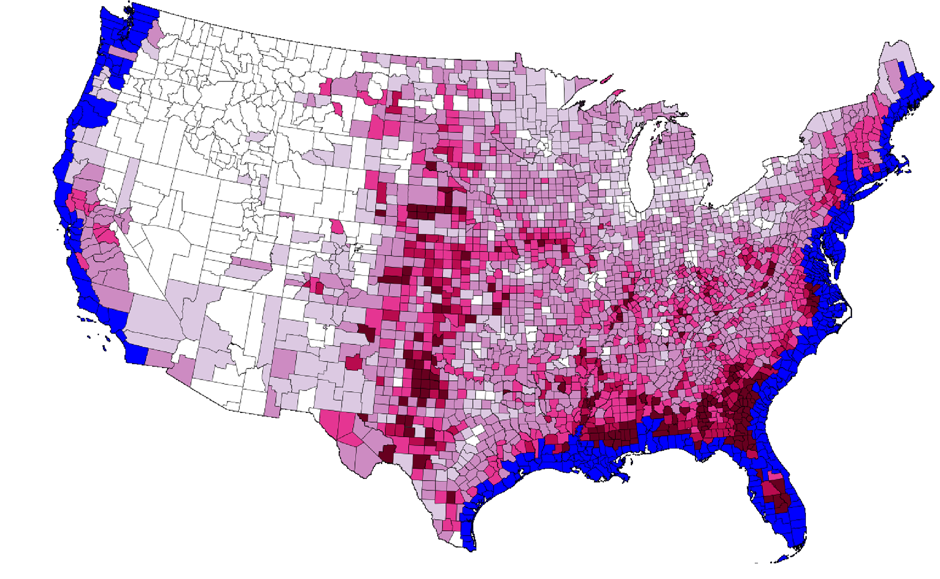Linda Poon
February 3, 2020
•••••
Climate experts expect some 13 million coastal residents in the U.S. to be displaced by the end of this century. A new PLOS One study gives some indication of where climate migrants might go.
“A lot of cities not at risk of sea of level rise will experience the effect of it,” says Bistra Dilkina, a computer scientist at the University of Southern California, who led the study. “This will require an adjustment in terms of the [increased] demand on the cities’ infrastructure.”
•••••
In the worst-case scenario, in which sea levels rise by six feet by 2100, the resulting map shows portions of almost all counties on the East and West Coasts, and along the Gulf of Mexico, under water. It also shows that cities closest to the flood-prone areas, and that aren’t typically attractive destinations for newcomers, could see a higher-than-average influx of migrants. In Florida, for example, that means people may increasingly move to the shrinking core of the peninsula as the coastlines disappear into the ocean. Demographer Mathew Hauer, whose climate migration research was a building block for Dikina’s, explained in Audubon Magazine that people tend to move to familiar places nearby, where they might already have friends, family, or some other support network. People may also flock to major urban centers like Dallas and Houston, which the model predicts will absorb the most migrants, and drive up the pace of urbanization.
•••••
In the long term, “that's going to lead to displacement, housing pressure, and probably even to homelessness among people who are being indirectly forced out by the people moving in,” Keenan says—a phenomenon he calls “climate gentrification.”
•••••
Dilkina is careful to describe the study as only an “approximation” of how sea level change might drive migration patterns, not a precise picture of where people will actually move.
•••••
For one thing, sea level rise is just one effect of climate change. Heat waves will drive people north—and could make make cities like Duluth and Buffalo “climate havens.” Urban flooding will reshuffle populations within a city. And extreme storms will move people in yet other ways. Meanwhile, as in Paradise, “forest fires are going to have dramatic effects on the West Coast, including the Pacific Northwest,” says Keenan. “All of those things are changing land economics, housing economics, and public finance.”
•••••
At the very least, it will alert policymakers to start analyzing current infrastructure investments and plan for the long term. “So if we're going to build a road,” he says, “is this for today's population of is this for tomorrow's population?”
[When have we ever done much planning for the future?]


No comments:
Post a Comment